As of 2025, consumers across the United States are feeling the squeeze of rising prices. From groceries and rent to appliances and fuel, inflation is creeping into nearly every corner of daily life. What’s driving these increases? A complex mix of economic forces—including newly imposed tariffs, lingering global supply chain disruptions, and elevated labor and material costs.
This guide is designed to help you understand exactly what’s happening, who’s most affected, and what you can do to protect your financial stability in this environment.
Understanding the 2025 Price Landscape
According to the latest data from the U.S. Bureau of Labor Statistics, the Consumer Price Index (CPI) rose 2.4% year-over-year as of March 2025. Notably:
- Food prices rose 3.0%
- Electricity and utilities increased 2.9%
- Home appliances are up 6.1% on average
- Auto insurance premiums spiked by over 8% in some states
- Rent and housing costs continued to rise, especially in urban areas
These price increases are being driven by several overlapping factors:
- New U.S. tariffs on imported goods, raising the cost of electronics, clothing, and raw materials
- Supply chain bottlenecks, particularly for semiconductors and energy equipment
- Labor shortages, which are pushing wages—and prices—higher in service industries
- Climate-related disruptions, which are increasing food production costs and insurance premiums
Who’s Being Hit the Hardest?
Lower-Income Households
- Spend a larger portion of their income on essentials like food, transportation, and rent.
- Have less financial flexibility to absorb price increases.
- Are often renters, and housing costs have risen faster than wage growth in many cities.
Middle-Class Households
- Are now squeezed from both ends: higher living costs, but often ineligible for aid.
- More likely to carry debt—particularly student loans and car payments—making them vulnerable to interest rate shifts.
- Their spending is more discretionary, so rising prices directly impact savings and long-term planning.
Higher-Income Households
- Feel the impact on investments, real estate taxes, and luxury spending.
- While more insulated, they may see delays in discretionary goods, such as high-end appliances, vehicles, or renovations.
- Still benefit from flexible spending and investing opportunities.
Smart Budgeting Strategies in a High-Cost Environment
1. Conduct a Full Spending Audit
- Use tools like Mint, Monarch, or YNAB to categorize your expenses for the past 3 months.
- Highlight recurring non-essentials: subscriptions, streaming platforms, food delivery, etc.
- Identify your costliest rising categories and rank by urgency.
2. Rebuild a “Needs-First” Budget
- Prioritize: housing, groceries, transportation, insurance, health.
- Reduce variable costs: entertainment, clothing, electronics, travel.
- Set firm monthly limits and shift to envelope-based or percentage budgeting models.
3. Build or Replenish an Emergency Fund
- Aim for 3–6 months of essential expenses.
- If starting from scratch, set a micro-goal of $500, then $1,000.
- Automate transfers—no matter how small—to a high-yield savings account.
Smarter Shopping Habits
1. Comparison Shop Relentlessly
- Use browser extensions like Honey, Capital One Shopping, or Rakuten.
- Compare unit prices when buying groceries or household items.
- Sign up for price drop alerts on items you expect to buy soon.
2. Buy in Bulk—Strategically
- Focus on non-perishables: paper products, grains, cleaning supplies, pet food.
- Join warehouse clubs (e.g., Costco or Sam’s Club) only if you use enough to justify the membership.
- Consider community bulk-sharing with friends or neighbors.
3. Choose Store Brands More Often
- Store-brand groceries and pharmacy items are often 20–40% cheaper.
- Try replacements for pantry staples and over-the-counter medications first.
4. Use Rewards, Cash-Back, and Coupons
- Maximize credit card cash-back categories (groceries, gas, utilities).
- Install store apps to clip digital coupons or scan loyalty cards at checkout.
- Stack cash-back offers from apps like Ibotta or Fetch with manufacturer coupons.
Managing Debt and Credit
1. Tackle High-Interest Debts First
- Use the avalanche method: prioritize the highest-interest loans and credit cards.
- Even paying an extra $25–50/month can reduce long-term interest costs significantly.
- Call creditors to negotiate lower rates or explore 0% balance transfers (if you qualify).
2. Avoid Taking on New Debt
- Postpone major financed purchases if rates are high or your income is uncertain.
- Avoid “buy now, pay later” temptations that quietly increase your financial obligations.
3. Monitor and Maintain Your Credit Health
- Use free services like Credit Karma or Experian Boost to track your credit score.
- Correct inaccuracies and understand what impacts your score (utilization, payment history, etc.).
- Keep old accounts open to preserve credit history length.
Long-Term Financial Resilience
1. Invest with Caution—but Don’t Stop
- If you’re investing, continue—but rebalance based on your risk tolerance and timeline.
- Use dollar-cost averaging to minimize the impact of market volatility.
- Consider inflation-resistant investments (e.g., I Bonds, TIPS, certain ETFs).
2. Increase or Diversify Income Streams
- Consider freelance, consulting, part-time work, or gig platforms that fit your schedule.
- Upskill through free or low-cost courses (e.g., Coursera, Udemy, LinkedIn Learning).
- Sell unused items online via Facebook Marketplace, eBay, or Poshmark.
3. Plan Big Purchases Strategically
- Delay if possible.
- Research discounts, off-season sales, or open-box options.
- Negotiate whenever feasible—especially for services and appliances.
Staying Informed and Planning Ahead
- Subscribe to CPI and inflation updates from sources like the BLS or local news.
- Follow your state’s economic trends—housing markets, utilities, transportation rates can vary dramatically.
- Keep tabs on political decisions affecting tariffs, interest rates, and subsidies—especially during election seasons.
Rising Prices Are Real—But You’re Not Powerless
The financial landscape in 2025 is undeniably more expensive—but it’s also navigable with the right tools, strategies, and mindset. Whether you’re just trying to keep up with grocery bills or reassessing your long-term goals, remember that small adjustments compound into major savings.
The key is to:
- Be proactive, not reactive
- Understand your financial reality
- Use every resource and advantage available
Your paycheck may not go as far as it did two years ago—but your discipline, awareness, and adaptability are worth more than ever.







